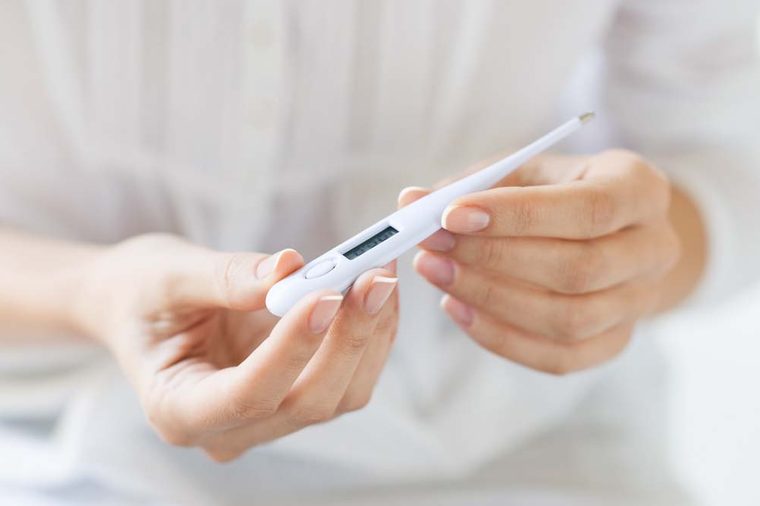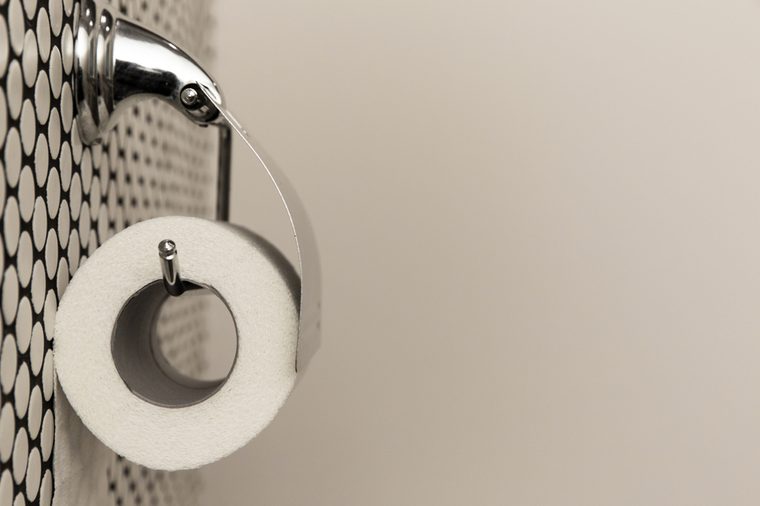A bulge in the abdomen
The most common sign of a hernia is a painful, visible lump or protrusion in your abdominal area. But that’s not the only indication that you could be experiencing this painful—and potentially dangerous—condition. Following are some other hernia symptoms that you’re much more likely to ignore.

Pain while bending over or lifting heavy objects
Pain and discomfort in your abdomen can signal a hernia even if you don’t see a bulge. In particular, if you feel pain, pressure, or discomfort while bending down, lifting things, or coughing, you might want to talk to your doctor. Hernias can also manifest themselves in the form of an uncomfortable tightness in your abdomen or groin. Some rare types of hernias—such as femoral or obturator hernias, in which an abdominal organ pushes into the groin or upper leg—are less likely to reveal themselves in the form of lumps; diagnosing these types can require a CT scan.
Related: Natural Home Remedies for Back Pain

Feeling full
This is one of the most easily overlooked hernia symptoms since it’s so easy to confuse with actually being full. However: The most common type of hernia—inguinal—occurs in the lower abdominal or groin area; it can be painful, or it may leave you with the sensation that you just finished Thanksgiving dinner. If you’re feeling bloated and heavy and you haven’t overeaten—especially if the feeling worsens or becomes painful—get checked for a hernia.
Related: 8 Normal Reasons Your Belly is Bloated (And 4 Times to Worry)

Muscle weakness
While muscle weakness can lead to a hernia, it can also be a symptom. Once you have a hernia, the pressure on surrounding areas can lead to a greater sense of muscle fatigue. If you’re feeling weak—especially in the muscles of your upper leg and groin—a hernia might be to blame.
Related: Why It’s Especially Important For Women to Build Muscle

Nausea or vomiting
Abdominal issues like an upset stomach or vomiting can be a sign that a hernia is becoming serious. Herniated tissue that doesn’t heal or return to where it belongs is considered “incarcerated,” which means it’s trapped, and that can lead to nausea and/or vomiting. If you are able to locate the hernial bulge, you may be able to gently push it back in yourself, preventing it from becoming incarcerated. If you do develop an incarcerated hernia, it will become extremely painful, and you’ll need to get emergency medical treatment.
Related: 5 Reasons Your Stomach Hurts

Fever
You should always take a fever seriously, but if it’s accompanied by other hernia symptoms you need to get to the ER right away. It could mean the herniated tissue is strangulated—it’s not getting any blood flow—and that’s a potentially life-threatening situation.

Constipation
Occasionally, your large intestine can herniate, and that can block digestion. The result will be constipation and difficulty passing gas. In some cases, the piece of bowel can even swell and become strangulated, a condition that usually requires a surgical procedure to fix.

Heartburn
A hiatal hernia can strike your upper abdomen, and it has very different hernia symptoms, starting with heartburn or chest pain. A piece of your stomach squeezes through weak tissue into your esophagus; escaped stomach acid can inflame the area. The result will be a burning sensation that feels remarkably like heartburn. Here are 8 tips your doctor wants you to know about heartburn.

